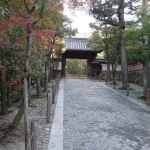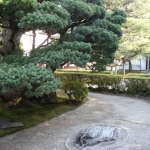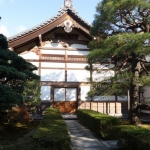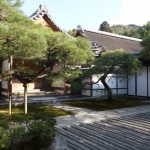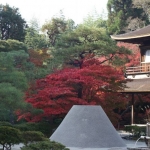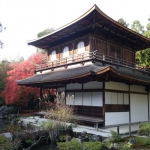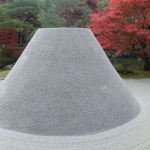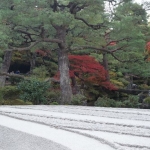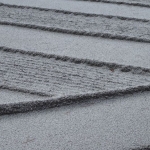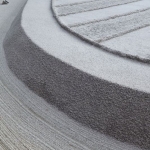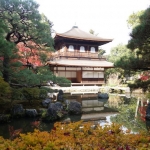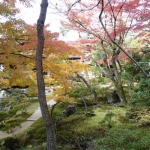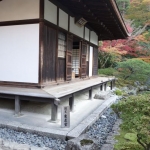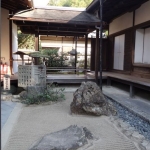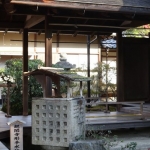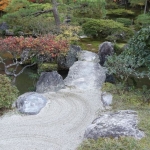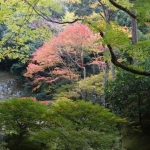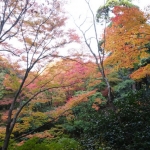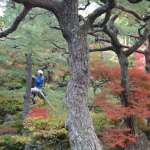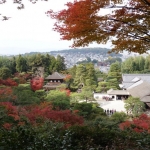Ginkaku-ji
I love my hut at the foot of the Moon Awaiting Mountain and the reflection of the sinking sky.
–Yoshimasa
During the Onin War (1467-77) in which most of Kyoto was destroyed, Shogun Ashikaga Yoshimasa (1435-90) turned his back on the turmoil of the capital and established on the grounds of Gingkaku-ji a pleasure palace of a simple and refined nature where he could enjoy its garden, tea, incense and all the more esoteric pleasures of his world.
It faced east, away from the realities of the miseries of the people of Kyoto. Yoshimasa moved there after his retirement in 1483. When he died it became a Zen Temple and was named Jisho-ji (Mercy Shine Temple) after Yoshimasa’s posthumous name.
The villa was 30 times its present size, so large that it was actually called Higashiyama-dono (Eastern Hills Palace). Despite its name, the Silver Pavilion was never covered in silver. Instead, it is believed that the name arose as a nickname more than a century after the building’s construction to contrast it with theGolden Pavilion. Alternatively, it is explained that moon light reflecting on the building’s dark exterior (which used to be covered in black lacquer in the past) gave it a silvery appearance.
With Yoshimasa’s support, the art of the tea ceremony reached new heights and other art forms like poetry, flower arranging, banquets, moon viewing, incense parties all became once again high arts as they had been in the times of Heian-kyo (795-1200).
The garden of the Silver Pavilion remains unique in Japanese garden history, combining dry (karesansui) and pond gardens in such a way that it is experienced in the Zen sense of contrasts that they are not distinguished as opposites but as parts of the same whole.
In the dry garden there are two sculpture mounds of sand, one a truncated mound of sand Kogetsu-dai or Moon Viewing Platform and a large lower horizontal 2 foot high mound called Ginshaden – The Sea of Silver Sand – so named for its appearance by moonlight. It is raked in a pattern to suggest a sea in motion. When the moon appears over Tsukemachiyama (Moon Awakening Mountain) to the east, the sand sea seems to ripple in the moonlight. In the pond garden the rocks and stones come from all over Japan as tribute or duty to the Shogun from his feudal lords. Each stone has a name and a recorded history. It is critical to get to the site when it first opens.
For more information see https://en.wikipedia.org/wiki/Ginkaku-ji


